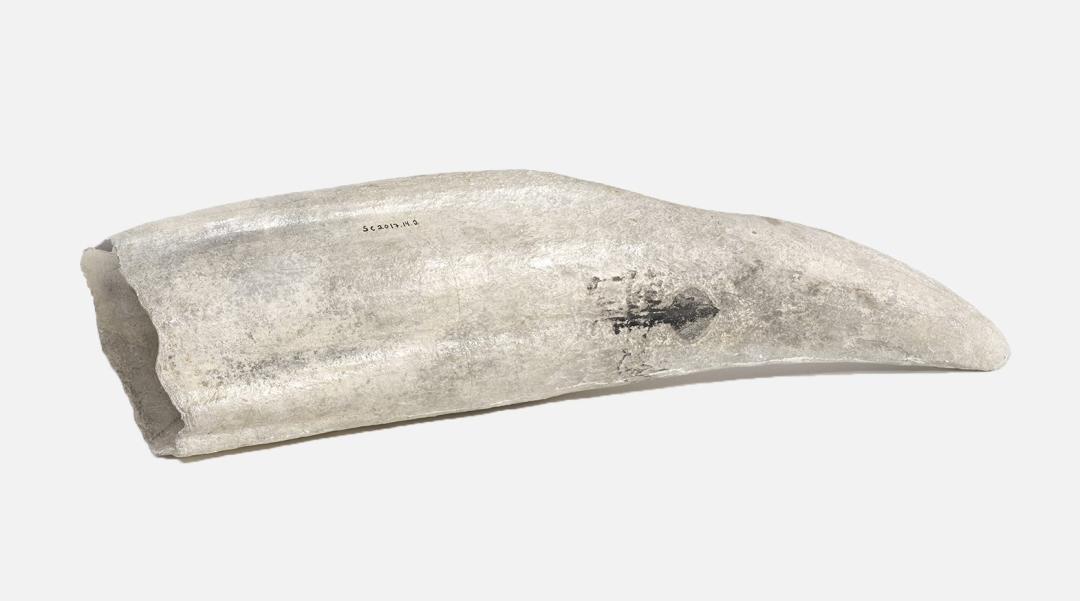
By Dave Cicimurri, Curator of Natural History

In 1859 Joseph Leidy of Philadelphia described a strange fossil that was collected from marine sediments of North Carolina. Leidy thought the tusk-like tooth belonged to an extinct type of whale, which he named after North Carolina’s eminent paleontologist, Ebenezer Emmons.
The scientific name Ontocetus emmonsi roughly translates to Emmons’ whale. However, nearly 130 years later, the fossil was re-examined and determined to in fact belong to a walrus.
Walruses in South Carolina, though? It might sound unfathomable, but we have proof! This beautifully preserved, 2.4 million-year-old walrus tusk was found in Ridgeville, (Dorchester County) and generously donated to the State Museum by Mr. Matt Swilp.
The specimen shown here is a right tusk from Ontocetus emmonsi. One of 11 Ontocetus tusks in the State Museum’s collection. Look closely at the photo and you can see a worn area along the front of the tusk. This is probably related to how the animal ate, as the tusks of living walruses drag along the sea floor while they’re grubbing for prey.
Based on the lower jaws of Ontocetus, prey included soft-bodied animals, for their peg-like teeth were not adapted for chewing food like humans do. Although modern walruses apparently love clams, they don’t chew the shell but instead suck out the body from the shell.
What can we learn from Ontocetus fossils? A paper by Kohno and Ray (2008) provided a comprehensive overview of the species based on their study of numerous fossils from the southeastern Atlantic states. They found that the tusks of Ontocetus changed in shape and size as animals grew (ontogeny), and that male tusks appeared to be larger and more robust than tusks of females (sexual dimorphism).
These differences in tusk shape within individuals of the species is called intraspecific variation, and it can be observed in the modern walrus, Odobenus rosmarus. You can see some of this variation on your next visit to the State Museum, as another, more curved, tusk is on exhibit in the natural history gallery on the second floor.
So, what was South Carolina like when Ontocetus was alive 2.4 million years ago? Was it cold, like in the Arctic where modern walruses live? Maybe not, as Ontocetus fossils have been found as far south as Florida, where conditions were more tropical.
Although not the largest tusk in our collection, it is the most complete. Our other specimens consist of partial and fragmentary tusks found by SCUBA divers in the Broad and Cooper rivers.
Researchers at the National Museum of Natural History have made casts of the Ridgeville tusk for the Smithsonian’s collection, and it compliments their assortment of South Carolina Ontocetus fossils, which includes part of a left lower jaw that was found in Berkeley County.









